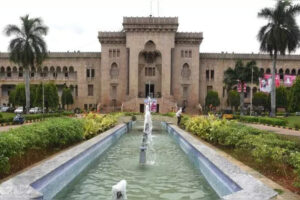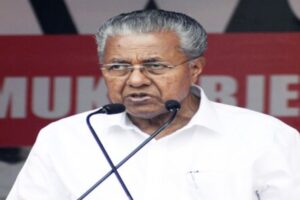Daily News Analysis – 23 June 2025
Draft Registration Bill 2025: A Leap into Digital Land Governance
The Ministry of Rural Development has proposed the Draft Registration Bill 2025 to overhaul the 117-year-old Registration Act of 1908. The bill aims to digitize land documentation, improve citizen access, and introduce transparent registration protocols. It introduces online and offline registration with Aadhaar verification, expands the list of documents requiring registration, and empowers new officials under the Inspector General of Registration. The challenges lie in ensuring cybersecurity and the competency of Common Service Centres handling critical processes.
Fighting AMR with Insect-Based Feed: India’s Bold Move in Livestock Innovation
To combat the global crisis of antimicrobial resistance (AMR), India is turning to insect-based livestock feed. This ICAR-led initiative taps into the natural antimicrobial properties of insects like black soldier flies. Not only do these alternatives reduce antibiotic dependence, but they also improve animal nutrition and offer better cost efficiency. This comes as a timely solution, considering that 50% of global antibiotic use is in animal agriculture, accelerating resistance across ecosystems. India complements this innovation with robust policies like the NAP-AMR and awareness campaigns such as the Red Line initiative.
Global Classrooms in Indian Cities: Foreign Universities and the NEP Vision
The entry of foreign universities into India, enabled by UGC’s 2023 regulation, has stirred debate and excitement. With campuses set to open in GIFT City and Navi Mumbai, the move aligns with NEP 2020’s global partnership goals. While this development promises global pedagogy and reduces education-linked forex outflows, it also raises concerns about affordability and limited early reach. Lessons from global experiments suggest that strong local collaboration and equitable access will be the key to long-term success.
Expansionary Policies Amid a Slowing Economy: Boon or Bane?
India’s unique policy stance combines fiscal stimulus with monetary easing to revive demand in a slowing economy. The Union Budget 2025–26 allocated significant funds for infrastructure and agriculture, while the RBI cut repo rates to 5.5%. Though these measures aim to stimulate demand, challenges like muted consumption, unemployment, and fiscal deficits persist. Historical parallels from the New Deal to Abenomics highlight the importance of coordination and targeted support. India must now calibrate these measures to prevent long-term structural imbalance.
Quantum Communication Milestone: India’s Strategic Tech Leap
India’s defense and academic institutions have achieved a milestone in quantum secure communication using quantum entanglement over free space. Conducted by IIT Delhi’s DIA-CoE, this 1 km test marks progress in Quantum Key Distribution (QKD). Compared to global leaders like China with a 4,600 km quantum network, India’s initiative is in its infancy but rapidly evolving. The success of the National Quantum Mission will depend on sustained funding, skilled talent, and global partnerships.
Legacy of Dr. Syama Prasad Mukherjee: A Nationalist Visionary
Prime Minister Narendra Modi paid homage to Dr. Syama Prasad Mukherjee, the founder of Bharatiya Jana Sangh. A formidable parliamentarian, Mukherjee was known for his oratory and advocacy for national unity, particularly on the Jammu and Kashmir issue. His legacy remains foundational in shaping India’s political narrative.
UMEED Portal: Digitizing Waqf Property Management
The Minority Affairs Ministry’s UMEED Portal is pushing states to upload all Waqf properties digitally within six months. The portal aims to bring transparency and efficiency to Waqf property management, featuring GIS mapping, public access to verified records, and a grievance redressal system.
U.S. Strike on Iranian Nuclear Facilities: Rising Middle East Tensions
In an unprecedented move, the U.S. launched airstrikes targeting Iran’s nuclear facilities in Natanz, Fordow, and Isfahan, marking a sharp escalation in U.S.-Iran-Israel hostilities. This action, coordinated with Israel, revives global debates over the JCPOA and raises concerns about regional nuclear proliferation.
Strait of Hormuz Crisis: Iran’s Blockade Threatens Energy Supply Chains
In retaliation, Iran’s parliament has moved to block the Strait of Hormuz, through which 20 million barrels of oil pass daily. The closure risks global energy shocks, with significant implications for India, which imports over 90% of its crude—much of it transiting the Strait. This act could spur inflation and fiscal pressures amid already tight economic conditions.
Sariska Tiger Reserve: Conservation vs. Mining Interests
A proposal to redraw the Critical Tiger Habitat boundaries of Sariska may reopen over 50 marble mines shut by a Supreme Court order. The plan, if approved, would exclude degraded peripheral areas from the CTH, balancing ecological protection with local economic activity. This raises questions about conservation ethics and sustainable development.
GBU-57 Massive Ordnance Penetrator: The U.S. Military’s Deep Strike Weapon
The U.S. military deployed the GBU-57, its most powerful non-nuclear bunker buster, in strikes targeting Iran’s underground nuclear facilities. Weighing nearly 30,000 pounds, this GPS-guided bomb can penetrate over 200 feet of reinforced concrete. No other country possesses a comparable system, underscoring the U.S.’s military dominance in non-nuclear deterrence.
INS Nilgiri: India’s Stealth Power in the Indo-Pacific
INS Nilgiri, the first of the Project 17A stealth frigates, joined the Eastern Naval Command, boosting India’s blue-water capabilities. Built indigenously by MDL and GRSE, the ship features advanced stealth technology, anti-submarine warfare systems, and multirole combat capabilities. It’s a leap toward maritime self-reliance and deterrence in the Indo-Pacific.
INS Tamal: India’s Last Russia-Built Warship
India is set to commission INS Tamal, the final frigate built by Russia for the Indian Navy under the Krivak-class. The ship incorporates 26% indigenous components, including the BrahMos missile system, and represents the transition point to fully indigenous warship construction under programs like Project 17A.
Source link



